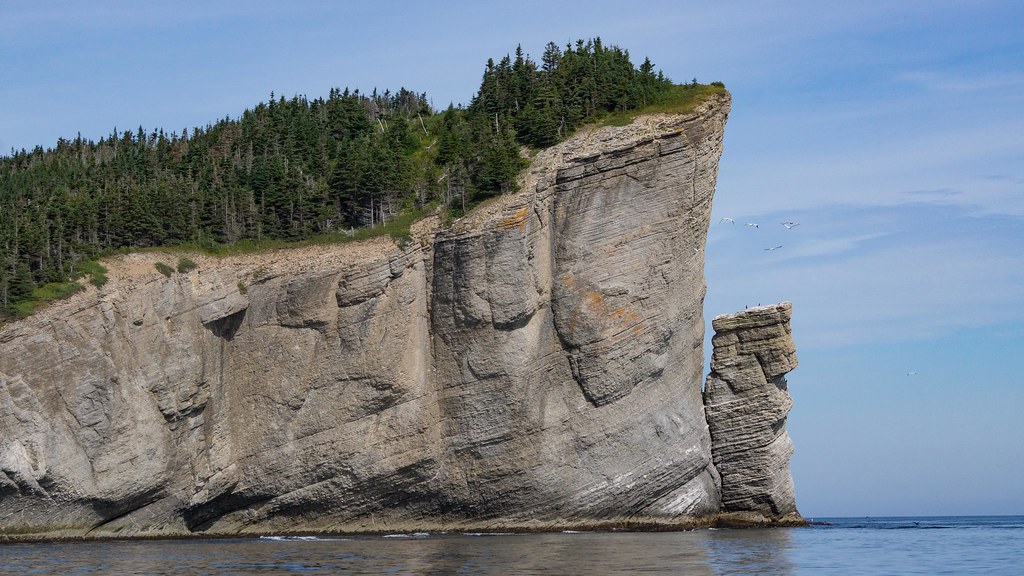Forillon National Park is a true natural wonder situated at the outer tip of the Gaspé Peninsula. Established in 1974 and spanning 240.4 km2 / 92.81 mi2, the park is a wild and beautiful landscape shaped by erosion and the powerful forces of the sea. The park’s coastline is spectacular, with soaring limestone cliffs, pebble beaches, and rocks sculpted by the pounding surf. Inland, rugged hills and gorges are laced with tumbling streams, and the park is covered mainly by boreal forest, but tundra species characterize the limestone cliffs.
But the beauty of Forillon National Park isn’t just limited to its stunning landscapes. The park is also home to a diverse array of wildlife, including deer, moose, lynx, black bear, and red fox. An estimated 245 bird species have been sighted in the park, with many nesting on the coastal cliffs. Visitors can also look out for Atlantic puffins, gannets, Leach’s petrels, and common murres feeding in the waters offshore, as well as harbor and grey seals regularly hauling out on rocky points. The park is also a prime spot for whale watching, with the pilot, minke, blue, fin, and humpback whales often seen from shore, along with harbor porpoises.
The park also holds a rich human history, dating back to the 16th century when Jacques Cartier explored the region. French and English settlers arrived in the 18th century and harvested cod, herring, mackerel, and salmon. The traditional lifestyle of the cod fisherman of this region is one of the many themes of the park’s interpretation program.

Forillon National Park offers ample opportunities for outdoor recreation, including hiking, cycling, and horseback riding, making it an ideal destination for nature lovers and adventure seekers alike. With its breathtaking landscapes, rich wildlife, and fascinating human history, Forillon National Park is a must-see destination for anyone looking to explore the beauty and wonder of the natural world.
Did you know about Forillon National Park?
Did you know that Forillon National Park, one of 42 national parks and park reserves across Canada, is the first national park in Quebec and was established in 1974? The park includes a diverse range of landscapes, including forests, the sea coast, salt marshes, sand dunes, cliffs, and the Eastern End of the Appalachians. The park’s name, Forillon, is thought to have referred to a flowerpot island or sea stack, which used to be a landmark in the area but has since collapsed into the ocean.
The area was also a traditional summer hunting and fishing ground for the Mi’kmaq and Haudenosaunee people and was once used for its rich wood supply. However, the creation of the park in 1974 was preceded by the removal of 225 families through expropriation, and the government’s treatment of these families was deemed unconscionable. An official apology was issued by the House of Commons in 2011.

In addition to its rich human history, the park also boasts a diverse array of wildlife, including nesting colonies of sea birds and whales, seals, and woodland mammalian species such as red fox, black bear, moose, lynx, and more. The park also offers a variety of activities for visitors, including interpretation sites to learn about the park’s human and natural history, and opportunities for whale watching and visiting fortifications built during World War II.
Google Maps of Forillon National Park
This embeddable Google Map generated for free on Canada Maps.com